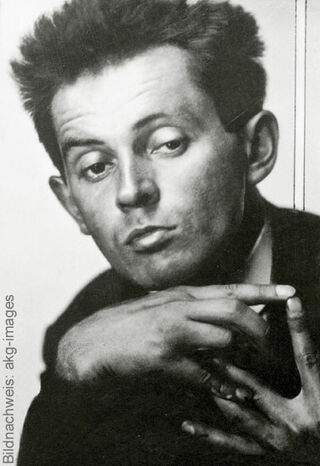Set of 4 pictures


Set of 4 pictures
Quick info
ars mundi Exclusive Edition | limited, 499 copies each | reproductions, Giclée prints on canvas | on stretcher frame | framed | size approx. 30 x 36 cm (h/w) each
Detailed description
Set of 4 pictures
Schiele's works are considered the most crucial link between Art Nouveau and Expressionism. They fetch the highest prices at international auctions. The most influential Schiele collection in the world is housed in the Leopold Museum, Vienna. Four of the most beautiful landscape paintings from this collection have been reproduced exclusively for ars mundi. ("Stein on the Danube" (1913), "House Wall on the River" (1915), "Crescent of Houses" (1915) and "Houses with Colourful Laundry" (1914)).
For a brilliant, authentic reproduction, each of the paintings by Schiele was transferred onto cotton canvas' using the high-resolution Fine Art Giclée process and stretched on solid wood stretcher frames. Framed in a high-quality solid wood frame. Limited edition of 499 copies each. Size approx. 30 x 36 cm (h/w) each. ars mundi Exclusive Edition.
This set contains the following products
Customer reviews
Sehr geehrte Damen und Herren! Die vier Schiele-Bilder sind eine wunderbare Ergänzung zu den beiden Werken von Klimt: Malcesine am Gardasee und Kirche in Cassone ..., die wir vor einiger Zeit bei Ihnen 'erstanden' haben. Wir freuen uns jeden Tag auf's Neue über diese Gemälde, sie sind eine wahre Bereicherung unserer Wohnumgebung, denn sie zaubern aus unserem Wohnzimmer eine besondere 'Wohlfühl-Oase' ...Mit herzlichem Dank für Ihr schönes Angebot verbleiben wir
Alles OK! Liebe Grüße

About Egon Schiele
1890-1918
The young artists who founded the rebellious so-called "Neukunstgruppe" (New Art Group) in 1909 wanted to break with the rigid traditions of academic fine art in the spirit of the Secession movements. One of those founders was Egon Schiele, born on 12 June 1890 in Tulln an der Donau ("on the Danube"), Austria, who had studied at the Vienna Academy from 1906-09.
His early work still bears Impressionist features and shows the influence of Gustav Klimt's Viennese Art Nouveau patterns, but from 1910 onwards more and more Expressionist features were included in his painting. His nudes of girls in particular are provocatively sensual and erotic, which went against the moral standards of the time and earned him a short prison sentence in 1912.
When he shifted to a more tectonic pictorial structure, he increasingly included city views and landscapes in his range of motifs. They never radiate cheerfulness, but rather are considered symbols of transience and death. The artist's mood is vehemently expressed through them as if he identified with them.
Egon Schiele sought to illustrate the spiritual life of his models in his portraits, through which the artist had achieved great recognition.
He repeatedly created paraphrases of main works by Gustav Klimt, Vincent van Gogh or Auguste Rodin. In 1915, Schiele was conscripted into military service. He expressed these experiences in more realistic and detailed paintings. On 31 October 1918 Schiele succumbed to the Spanish flu.
Schiele's works are considered the most important link between Art Nouveau and Expressionism and fetch top prices at international auctions. The most important Schiele collection in the world is in the Leopold Museum, Vienna.
Graphic or sculpture edition that was initiated by ars mundi and is available only at ars mundi or at distribution partners licensed by ars mundi.
Artistic movement that replaced Impressionism in the early 20th century.
Expressionism is the German form of the art revolution in painting, graphic art and sculpture, which found its precursor in the works of Paul Cézanne, Vincent van Gogh and Paul Gauguin in the late 19th century. The Expressionists attempted to advance to the primal elements of painting. With vibrant, unbroken colours in large areas and with the emphasis on the line and the resulting targeted suggestive expressiveness, they fought against the artistic taste established by the bourgeoisie.
The most important representatives of Expressionism were the founders of "Die Brücke" (The Bridge): Ernst Ludwig Kirchner, Erich Heckel, Karl Schmidt-Rottluff, Max Pechstein, Otto Mueller and Franz Marc, August Macke and others.
Masters of Viennese Expressionism are Egon Schiele and Oskar Kokoschka. Among the sculptors, Ernst Barlach is the most famous.
Fauvism is the French form of Expressionism.
Giclée = derived from the French verb gicler "to squirt, spurt".
The giclée method is a digital printing process. It is a high-resolution, large-format printout on an inkjet printer with special different-coloured dye- or pigment-based inks (usually six to twelve). The colours are fade-proof, i.e. resistant to harmful UV light. They have a high richness of nuance, contrast and saturation.
The giclée process is suitable for art canvases, handmade and watercolour paper as well as for silk.






